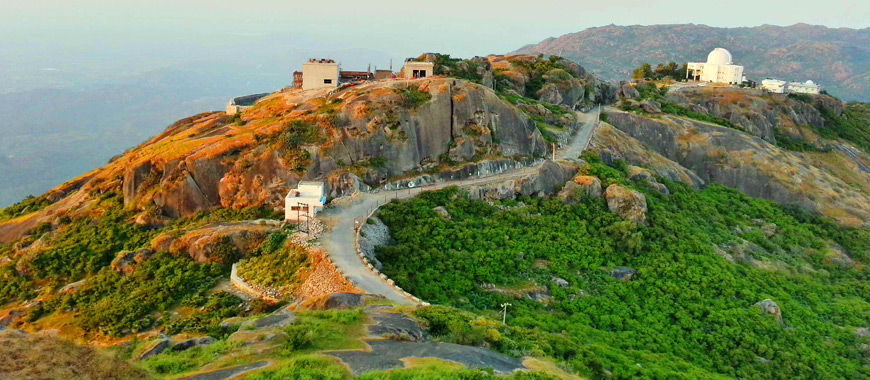The one and only hill station in Rajasthan, Mount Abu, also famously called the ‘Shimla of Rajasthan’, lies on the foothills of Aravali hill range at an altitude of 1220 m.
Also considered, 'an oasis in the desert', its heights are home to rivers, lakes, waterfalls and evergreen forests.

The most important attraction in the place is the Dilwara temples. If you are a history buff or have a little flair for architecture, this is exactly the place for you!
This is when you should visit this town-
Winters (November - February)
Mount Abu experiences pleasant weather in Winters. It is also the best time for sightseeing and other adventurous activities like trekking.
The winters are generally cold with the temperature reaching a low of about 12°C with the maximum temperature of about 29°C.
Monsoon (July - October)
Mount Abu receives moderate rainfall in Monsoon. For nature lovers, monsoons are an ideal time to visit Mount Abu. Even though the region receives less rainfall, these short spells of rain make the place fresher and greener.
Summer (March - June)
Mount Abu can be visited in Summers as well as the weather is not very hot. The temperature ranges from a minimum of 23°C to a maximum of 33°C. Days are pleasant and nights are generally cool.
So, in a nutshell, the best time to visit Mount Abu is all round the year as the climate remains constantly pleasant.
Places to visit and things to do in Mount Abu
The exceptionally intricate architecture of the Dilwara temples are of course the main attraction here. If architecture is not your thing, then there are various lakes and viewpoints such as the Honeymoon Point, Sunset Point, etc. Tourists can enjoy boating in the Nakki lake, and a view of the sunset from the Sunset point.

The highest peak of the Aravali Range also lies in Mt. Abu, surrounded by dense green forests. Also, the place is the headquarters to Brahma Kumaris.
Image Credits– Condé Nast Traveller India, IndianHoliday
Any information taken from here should be credited to Skymet Weather
